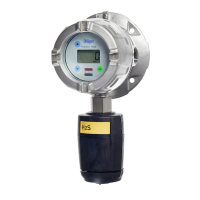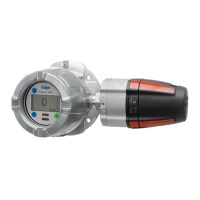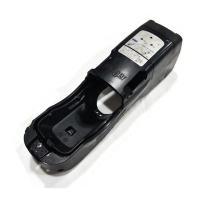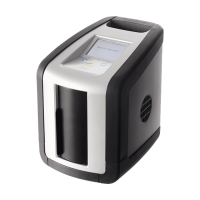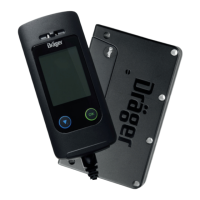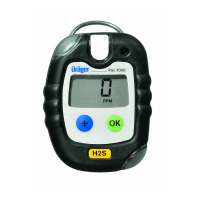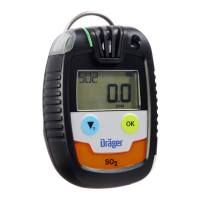6 Dräger Polytron 5000
Operation
3 Operation
3.1 Principle of operation
Dräger electrochemical sensors are electrochemical
measuring transducers for measuring the partial pressure of
gases under atmospheric conditions. The ambient air being
monitored diffuses through a membrane into the liquid
electrolyte in the sensor. The electrolyte contains a measuring
electrode, a counter-electrode and a reference electrode. An
electronic potentiostatic circuit ensures a constant electrical
voltage between the measuring electrode and reference
electrode. Voltage, electrolyte and electrode material are
selected to suit the gas being monitored so that it is
transformed electrochemically on the measuring electrode and
a current flows through the sensor. This current is proportional
to the gas concentration.
At the same time, oxygen from the ambient air reacts at the
counter-electrode electrochemically. The current flowing
through the sensor is amplified electronically, digitized and
corrected for several parameters (e.g. the ambient
temperature). The resulting measured value is given as an
analog, 4-20
mA signal.
Design principle
1Meter
2 Potentiostat
3 Direct current
supply
4 Measured gas
5 Membrane
6 Measuring
electrode
7Electrolyte
8 Reference
electrode
9 Counter
electrode
10 Temperature sensor
3.2 Installation
z The flameproof/explosion proof enclosure provides three
¾" NPT openings, which can be used for field wiring, direct
attachment of a sensor or wiring of a remote sensor.
z Secondary circuit intended to be supplied from an isolating
source (N/A for relay circuits).
z The optional increased safety terminal box provides four
20
mm openings, which can be used for field wiring or
wiring of a remote sensor. The permissible cable diameter
range is 7 to 12
mm.
z When installed at locations exceeding ambient
temperatures of 55
°C, use only appropriate wiring,
specified for at least 25
°C above the maximum ambient
temperature.
1. Strip wire insulation by 5-7 mm.
2. Connect the wires as indicated in wiring figure (also
showing grounding conductor terminal).
Mount the instrument at an appropriate height for the gas to be
detected, taking into account the density of the gas, air flow
patterns in the room, personnel, and other environmental
considerations. For most toxic gases, where personnel
protection is the main goal, mounting the Polytron 5000 at an
average breathing height of about 5 feet (1.5 meter) is
common practice. Responsibility for correct placement of the
Polytron 5000 rests exclusively with the end user; if in doubt
about placement, consult with Dräger application engineers.
Polytron 5000 is a two-wire instrument powered by 16 to 30 V
DC. Wiring terminals are located on the bottom of the
enclosure; pull out the bezel by grasping the notches on either
side of the display with your fingers and pulling up.
1 Grasp notches with fingers and pull up.
Downloaded from Arrow.com.Downloaded from Arrow.com.Downloaded from Arrow.com.Downloaded from Arrow.com.Downloaded from Arrow.com.Downloaded from Arrow.com.
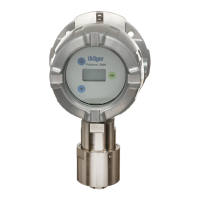
